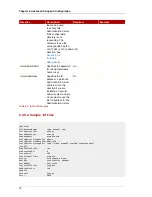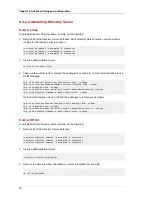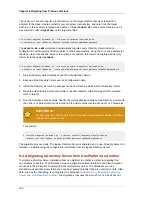
Chapter 7. General Usage Information
88
NOTE
You must run
dsktune
as
root
.
On Solaris,
dsktune
automatically checks the patches and compares them with the current Sun
recommended patch lists. If it detects that the system is missing an important patch,
dsktune
will
notify you, even if the patch is for package that is not installed yet.
The command to run
dsktune
is as follows:
/usr/bin/dsktune
The
dsktune
utility then scans the system for required patches and dependencies.
Red Hat Directory Server system tuning analysis version 10-AUGUST-2007.
NOTICE : System is i686-unknown-linux2.6.9-34.EL (1 processor).
WARNING: 1011MB of physical memory is available on the system. 1024MB is
recommended for best performance on large production system.
NOTICE : The net.ipv4.tcp_keepalive_time is set to 7200000 milliseconds
(120 minutes). This may cause temporary server congestion from lost
client connections.
WARNING: There are only 1024 file descriptors (hard limit) available, which
limit the number of simultaneous connections.
WARNING: There are only 1024 file descriptors (soft limit) available, which
limit the number of simultaneous connections.
Example 7.1. dsktune Output
7.7.2. Common Installation Problems
There are several common problems that can come up during the setup process, generally relating to
network or naming problems. These problems and workarounds and soluions are described below.
For system information, try running the
dsktune
utility to identify potential hardware problems.
7.7.2.1. Problem: Clients cannot locate the server
Solution.
First, modify the hostname. If that does not work, use the fully-qualified domain name, like
www.domain.com
, and make sure the server is listed in the DNS. If that does not work, check the IP
address.
If the NIS domain is not the same as your DNS domain, check your fully-qualified host and domain
name.
















































